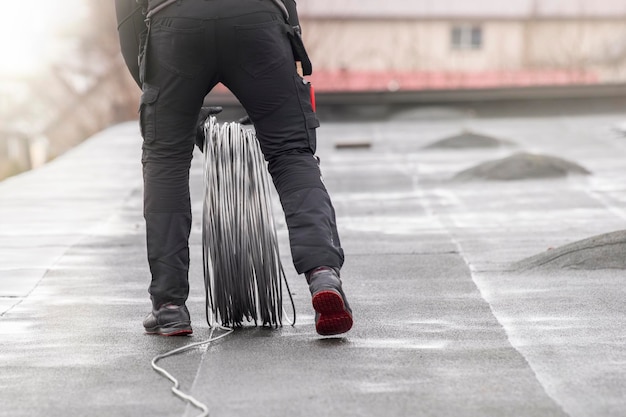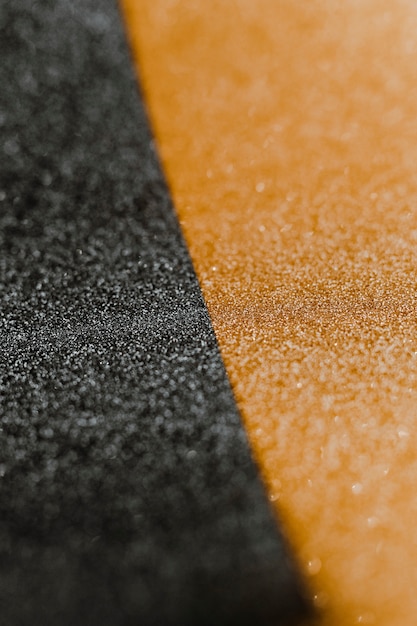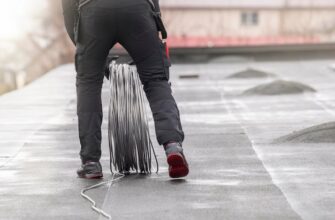
Our world is an intricate network of paths and roads, with paved surfaces serving as the backbone of our daily commutes, leisurely strolls, and more. Be it your home’s driveway or the city streets, these surfaces undergo a lot of wear and tear, demanding regular care and attention. But what is the key to ensuring long-lasting roads? Read on, as we delve into an often misunderstood yet vital aspect of pavement health.
Many might assume that laying down a beautiful, sturdy, road-worthy surface is a one-time affair. However, this initial paving layer is only a part of the story. Our roads and pathways are constantly at the mercy of changing weather conditions, heavy vehicular traffic, and other elements that cause deterioration over Hence, systematic care for our pathways proves to be not just beneficial but indeed crucial.
One approach to uphold the integrity and longevity of our paved surfaces is through the application of a protective coating periodically. This process, practiced commonly for blacktop caregiving, shields the surface from damaging factors. With time, this proven method has turned into an standard procedure, noted for its effectiveness in prolonging the pavement life.
But why exactly is this procedure so influential in pavement care? And just how beneficial is it to the longevity of your driveways or roads? Let’s unlock these queries as we dive into the importance of systematic application of a protective layer in upheld paved surfaces.
Explanation of asphalt deterioration over time
Every material in the world, whether natural or man-made, goes through a process of change over a period of time and asphalt is no different. Understanding this transformation can significantly contribute towards taking the right steps in enhancing the lifespan of asphalt surfaces. This section aims to demystify the gradual decline in the structural integrity of asphalt, and by oneself with this knowledge, one can take the appropriate steps to mitigate its effects.
The Inevitable Ageing Process
Realising the ageing process that asphalt goes through is the first step. As time passes, cracks begin to appear on the surface of the road due to the loss of the asphalt’s pliability. The once flexible, new asphalt turns rigid and brittle due to exposure to the elements such as UV rays, rain, snow, and extreme This results in the deterioration of the asphalt, a process which is slow but inevitable.
Effects of Water and Chemicals

Another major factor in the degradation of asphalt is the impact of water and oil-based products. Rainwater, especially, can accelerate the destruction process by seeping into the tiny cracks in the asphalt. Over time, these minute cracks can become larger, leading to pot holes. Similarly, oil-based products like gasoline and oil can also damage the integrity of the asphalt. Understanding these two can greatly assist in the effective and appropriate treatment of these issues.
In conclusion, the ageing and breakdown of asphalt over time is a reality that can be managed effectively by understanding its causes and taking appropriate preventive measures. By being proactive, one can certainly save money and the lifespan of the asphalt surfaces, thereby maximising the investment made on these structures.
Role of sealcoating in preventing damage
Preserving the integrity and longevity of pavement surfaces requires a holistic approach. Among the techniques involved, the application of a protective layer or ‘sealcoat’ plays a pivotal role in damage prevention. This process, when implemented routinely, can multi-level defense to the pavement surface, reducing the overall repair, and replacement costs.
The Ubiquity of Sealcoat Application in Damage Aversion
The principal driving factor behind the use of a sealcoat is to provide a barrier between damaging elements and the pavement surface. Environmental factors like sunlight and water can cause asphalt to deteriorate over time. This layer, however, deflects these damaging effects and extends the lifespan of the pavement.
How Sealcoat Minimizes Wear and Tear
Aside from environmental protection, sealcoat application mitigates the wear and tear inflicted by vehicular traffic. The continual passing of vehicles can cause considerable strain to the pavement, leading to cracks and potholes. A quality acts as a cushion, absorbing this stress and minimizing the instances of surface breakdown.
In summary, applying a protective sealcoat layer is a valuable solution in the arsenal of pavement preservation techniques. By reducing environmental and mechanical damage, it the durability and longevity of road surfaces, saving significant costs in the long run.
Long-term benefits of habitual upkeep

The advantages of continual preservation not only play a significant role in prolonging the lifespan of your pavement but also contribute to its operational efficiency. The focus of this section orbits around the extensive profits that habitual upkeep can bestow upon sidewalk pads. In the absence of concrete lingo, this part into the extensive profits that well-conserved surfaces can guarantee over a period of time.
To start, one of the key boons of consistent care is the extension of lifespan. With rigorous upkeep, road cover can hold its form and function for extended eliminating the immediate need for replacements and in turn, saving you significant cost over time.
Next, the proactive identification of damages. Habitual audits allow minor damages to be spotted early enough to be fixed while they are still manageable. This approach reduces the risk of substantial damages that could lead to massive rehabilitation costs.
Another long-term advantage includes enhanced appeal and aesthetics. surfaces never fail to impress, thereby boosting the overall visual appeal of the surroundings.
Finally, a crucial but often overlooked benefit is safety. Regular examination and upkeep of sidewalk pads ensure the elimination of potential reducing the risk of accidents and thereby ensuring the safety of pedestrians and vehicles alike.
In conclusion, the broad and lasting benefits of habitual upkeep highlight the significance and need for it. Not only does it guarantee the efficient running of the road but also ensures its longevity, aesthetic appeal, cost savings and safety in the long run.


